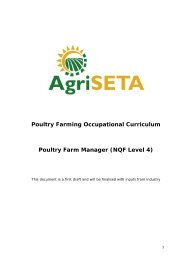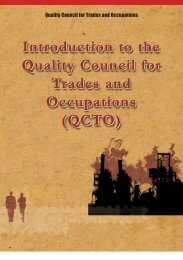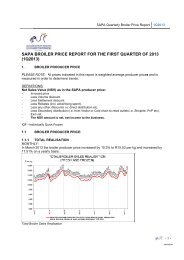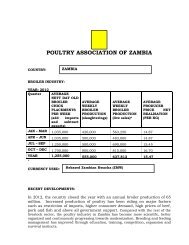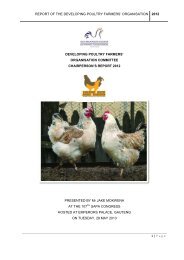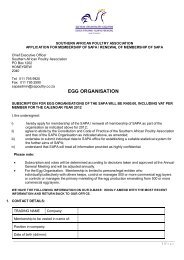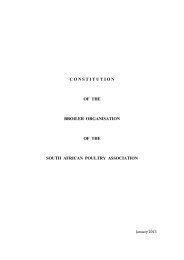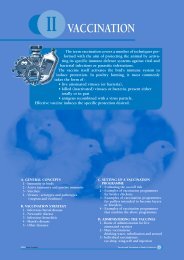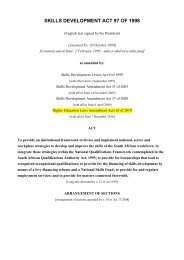industry news - SAPA
industry news - SAPA
industry news - SAPA
Create successful ePaper yourself
Turn your PDF publications into a flip-book with our unique Google optimized e-Paper software.
INTERNATIONAL NEWS<br />
can be converted to corn (and will be relatively unproductive the<br />
first year).<br />
In addition to lack of land, another problem is La Niña. La Niña<br />
conditions in the Pacific Ocean are expected to continue into<br />
the planting season. As a result, the northern Corn Belt may be<br />
too wet and too cool for an early start to planting this year. Just<br />
how much La Niña will impact crop production is, of course,<br />
highly speculative. Nevertheless, the scenario painted by<br />
meteorologists suggests that an unusually large harvest will not<br />
be possible this year due to the wet and cold spring. Yields may<br />
fall below the trend line again this year.<br />
If the futures market is correct, there will be one more year of<br />
high corn prices. Only with a surprisingly better yield would the<br />
price fall from the average levels of this crop year.<br />
“There is a great deal of confusion about the China<br />
market. However, it is possible that China could become<br />
the world's largest importer of corn over the next few<br />
years.”<br />
The worst case scenario would be a drought in the American<br />
Midwest this year. If a drought should happen, the lack of<br />
inventory would send prices up to over $10 per bushel ($400<br />
per ton) and ethanol production would probably be shut down<br />
on an emergency basis. There is a low probability of a drought<br />
but it is not impossible. No matter what happens this year it can<br />
be expected that corn prices will drop significantly in 2012.<br />
There is now a powerful economic incentive to plant corn and<br />
other grains all over the world. High grain prices will, in the end,<br />
cure high grain prices.<br />
42 | MARCH 2011 PLUIMVEE POULTRY BULLETIN<br />
The total use of corn in the US can be no higher than the<br />
harvest next crop year since inventory levels will be down to<br />
pipeline levels. That makes prices more volatile than normal and<br />
more dependent on yield. Even under the best scenario there<br />
will be cutbacks in chicken production from what they otherwise<br />
would have been. Meat prices will be higher and the resulting<br />
demand from consumers will be lower than otherwise expected.<br />
A wild card for corn demand is the status of Chinese corn<br />
imports. The US Grains Council reported that Chinese corn<br />
imports will increase to 6 million tons next crop year, up from a<br />
previous estimate of 3 million tons. As usual, there is a great<br />
deal of confusion about the China market. However, it is<br />
possible that China could become the world's largest importer<br />
of corn over the next few years.<br />
The potential of China to import 10 million, or even 20 million,<br />
tons of corn pales in comparison to the misguided ethanol policy<br />
of the US government. That unsustainable burning of feed will<br />
destroy 100 million tons of corn this year and take 40% of the<br />
total US harvest.<br />
Crop year 2010-2011 will have the highest average price of corn<br />
ever, even higher than in 2007-2008. Although any prediction<br />
about crop year 2011-2012 is highly speculative, it appears that<br />
the price of corn may continue at nearly these high levels for<br />
another year, followed by an inevitable drop in prices to lower<br />
levels in the next crop year. It would take an extremely good<br />
yield to bring the price down significantly in crop year 2011-2012.



